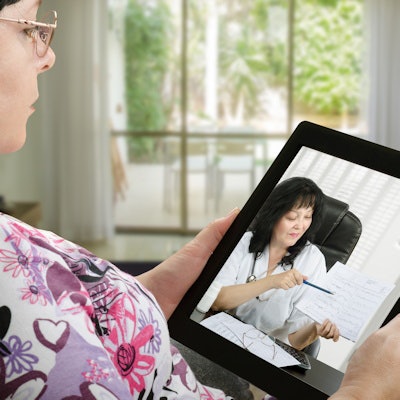
Both patients and primary care physicians (PCPs) reported an increase in how well patients understood their medical conditions following virtual visits with radiologists in a study presented April 22 at the virtual American Roentgen Ray Society (ARRS) meeting.
Researchers from Massachusetts General Hospital said the findings indicate that collaboration between radiologists, primary care physicians, and patients can result in better patient care.
Initiatives led by the RSNA and American College of Radiology have emphasized the role of radiologists in patient-centered care. But most patients discuss radiology exam findings with their referring provider and do not communicate directly with radiologists for their imaging results.
"We believe this is a missed opportunity," said J.C. Panagides, an undergraduate researcher from Massachusetts General Hospital. "The radiology report is a principal form of communication between the radiologist and PCP, but there is significant variability in their interpretations, with radiologists attributing a higher likelihood of disease based on certain report terminology than PCPs."
The researchers cited cardiovascular disease as an example in their study, saying risk is "consistently" underestimated by providers and patients. In addition, knowledge of their medical images can lead to patients taking steps to reduce their risk factors.
Massachusetts General Hospital previously piloted a point-of-care virtual radiology consult model where radiologists review imaging with patients and PCPs in real-time during patient visits. However, the researchers wanted to assess the attitudes of patients and their physicians regarding the perceived value of radiologists reviewing images with patients during primary care visits.
In the study of video-based radiology consultations between September 2019 and February 2020, patients and PCPs completed a survey after patients reviewed their medical images with a radiologist via a third-party video interface platform.
Out of the 30 patients who completed the survey, 18 said that it had a great impact on their understanding and the remaining 12 said that it had some impact. The patients had an average age of 67.1 years.
However, only about one-third of PCPs indicated that the radiologist discussing imaging results with patients had an impact on the patient's understanding of their medical condition and 22% indicated that it had no impact, suggesting a difference in perception with their patients (p = 0.03).
Eight PCPs (72%) indicated that they are often asked by patients to explain radiology images or results, and that they feel comfortable doing so.
Meanwhile, 62% of PCPs predicted that results discussion between patients and radiologists would have minimal or no effect on patient cardiovascular outcomes, although the consult stimulated a discussion about cardiovascular prevention in 44% of cases.
Panagides said this dissonance in perception warrants further investigation.
"Ultimately, we seek to all form a cohesive team with increased stakeholding in the patient's care and to deliver the highest quality of care," he said. "Close collaboration with PCPs and referring providers is needed to implement such a collaborative care model."




















